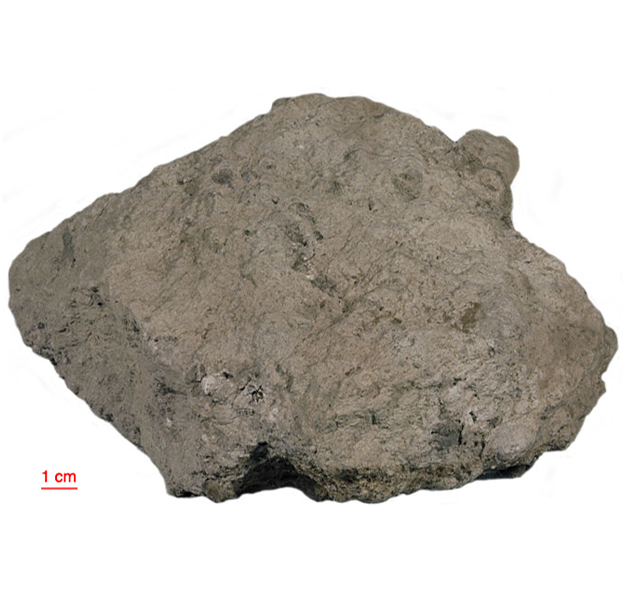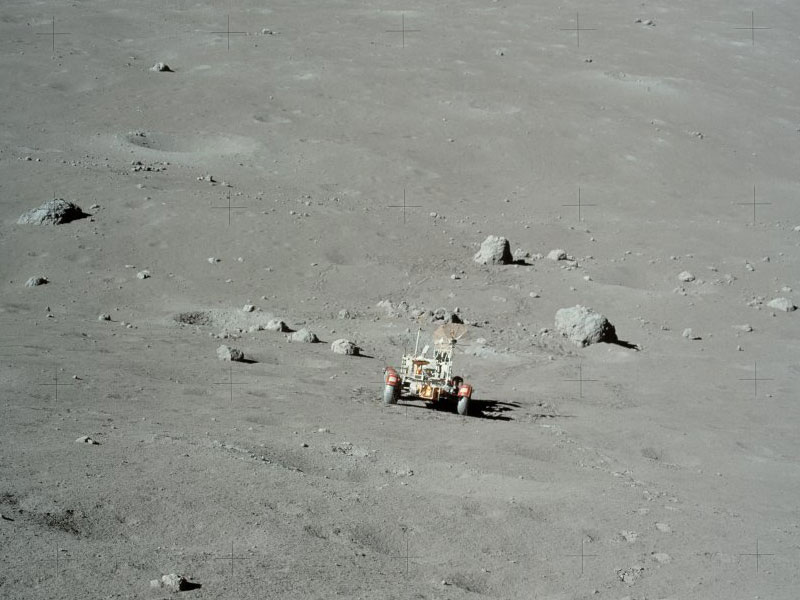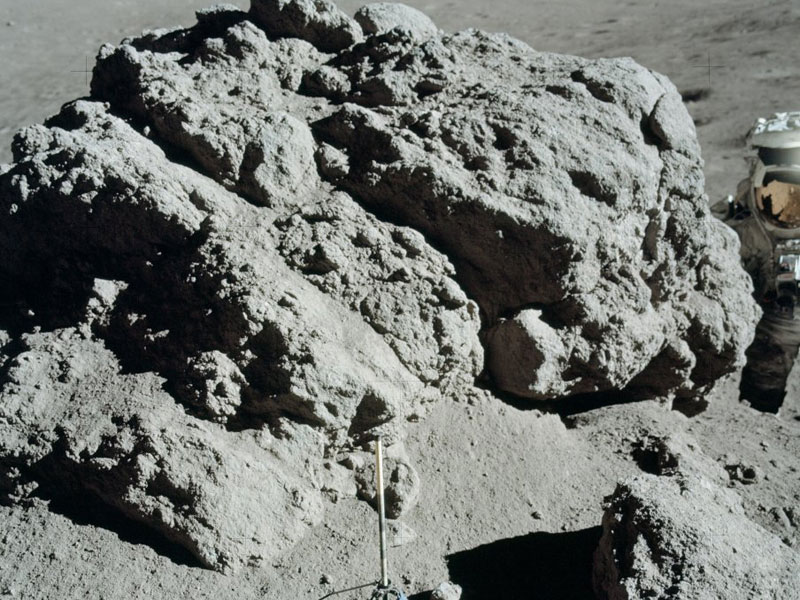
Fact sheet
Sample 72275 is friable feldspathic polymict breccia, meaning it contains many different types of rock fragment. It was derived from a variety of highly reworked highlands rocks that became mixed together during a long history of meteorite impacts. It has a crystal-poor matrix and was chipped from a boulder within a landslide from the South Massif during the Apollo 17 mission to the Moon.
In thin section the rock contains a wide variety of clast types including particularly noticeable pigeonite basalt clasts. The sample has a breccia-in-breccia texture where clasts of darker microbreccia are included in a lighter feldspathic matrix. Glass is a minor component and much of the material that appears to be glass is actually plagioclase that has been transformed into maskelynite by shock during meteorite impacts.
Further details of this and other Apollo samples are here: http://curator.jsc.nasa.gov/lunar/
Apollo 17, the final manned landing mission, had two objectives: to obtain samples of ancient rocks from the lunar highlands and to look for evidence of younger volcanic activity on the valley floor.
This small Collection contains material deriving from both periods, including igneous rocks around 4.3 billion years old from the lunar highlands as well as younger volcanic samples dating from about 3.6 billion years ago.
Apollo 17 was launched on 7 December 1972.








